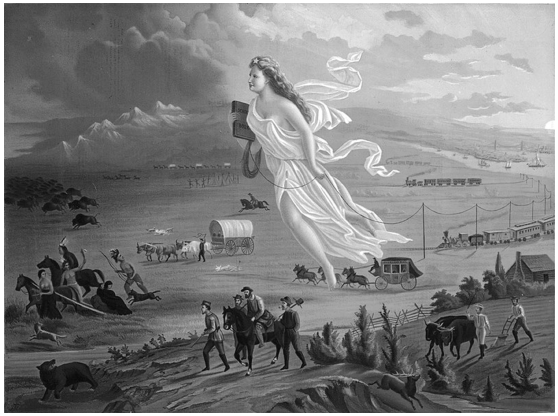Questões de Concurso
Comentadas para prefeitura de sete lagoas - mg
Foram encontradas 201 questões
Resolva questões gratuitamente!
Junte-se a mais de 4 milhões de concurseiros!
BITTENCOURT, Circe Maria Fernandes. Ensino de História: fundamentos e métodos.1ª ed. São Paulo: Cortez, 2005. p. 183.
O texto apresenta uma reflexão sobre as aprendizagens em História.
Sobre esse tema, é correto afirmar:
Inscreve no Livro dos Heróis da Pátria os nomes dos heróis da Revolta dos Búzios João de Deus do Nascimento, Lucas Dantas de Amorim Torres, Manuel Faustino Santos Lira e Luís Gonzaga das Virgens e Veiga.
Disponível em: https://www.jusbrasil.com.br/topicos/26321339/ artigo-2-da-lei-n-12391-de-04-de-marco-de-2011. Acesso em: 10 out. 2022.
Nas aulas de História sobre os movimentos sociais separatistas da América Portuguesa, como a Revolta dos Búzios, também conhecida como Conjuração Baiana (1798), é importante apresentar e discutir a referida lei, uma vez que ela
KARNAL, Leandro (org.). História na sala de aula: conceitos, práticas e propostas. São Paulo: Contexto, 2003. p. 39.
A necessária seleção de conteúdos faz parte de um conjunto formado pela preocupação com o saber escolar. Considerando essa temática e as informações apresentadas no texto, assinale a alternativa correta.
Analise a imagem a seguir.

Disponível em: https://pt.wikipedia.org/wiki/Progresso_Americano#/media/Ficheiro:American_Progress_(John_Gast_painting).jpg. Acesso em: 10 out. 2022.
A obra “Progresso Americano” é uma pintura de 1872, de John Gast, que foi amplamente divulgada nos Estados Unidos. Ao trabalhar com a história da formação dos Estados Unidos, livros didáticos e professores, no Brasil, recorrentemente utilizam essa obra para analisar esse contexto e a memória estadunidense.
Assinale a alternativa em que se apresenta uma interpretação correta sobre a obra, que pode ser discutida em sala
de aula.
O professor considerou importante conversar com a turma sobre o tema, e, para isso, abordou o assunto de forma a descrever que
Startup indiana pode revolucionar agricultura oceânica com ‘colheitadeira marítima’
A agricultura oceânica está na “idade da pedra”, de acordo com Shrikumar, cofundador e CEO da Sea6 Energy. Fundada em 2010, a Sea6 Energy quer mecanizar a agricultura oceânica com seu “Sea Combine”, um catamarã automatizado que simultaneamente colhe o ser fotossintetizante desenvolvido e adiciona novos seres para desenvolvimento no oceano. Esse ser possui membrana nuclear e é muito utilizado na indústria alimentícia.
Disponível em: https://www.cnnbrasil.com.br/business/ startup-indiana-pode-revolucionar-agricultura-oceanica-comcolheitadeira-maritima/. Acesso em: 6 ago. 2022 (adaptado).
Diante do exposto na notícia, que conteúdo poderia ser abordado pelo professor na próxima aula?
Animado com a curiosidade da aluna, na aula seguinte, o professor levou para a turma
Vários alunos levantaram diferentes hipóteses em aula, e o professor explicou de forma correta aos alunos que
A regeneração da pele destacada pelo professor ocorre devido à divisão celular do tipo
A Mata Atlântica assume a terceira posição entre os biomas mais afetados pelo fogo, com 16,8% do total de focos entre os demais biomas, um aumento de focos de 18% em 2021, se comparado com o ano de 2020. O segundo bioma mais devastado pelas queimadas é a Floresta Amazônica, com 31% do valor total dos focos. Já o Cerrado Brasileiro arde em chamas e assume o topo na ordem de número de focos por biomas brasileiros. Já são mais de 17.000 focos pelo satélite de referência do INPE, o que representa 42,7% das queimadas que acontecem no Brasil no ano de 2021, e esse valor representa um aumento de 17% em relação a 2020.
Disponível em: https://www.terra.com.br/noticias/climatempo/ cerrado-e-outros-biomas-brasileiros-estao-em-chamas,f8ff6461 9c63c326670a01a80dcc5a39lpcdndgu.html. Acesso em: 25 abr. 2022 (adaptado).
Após o estudo da importância da conservação dos biomas brasileiros, essa notícia foi levada por um dos alunos para a aula. Uma discussão foi gerada em sala, e os alunos concluíram que o evento em destaque na notícia é prejudicial ao ambiente porque
Após a discussão em sala, os alunos identificaram a presença de amido
Analise as afirmativas a seguir, referentes ao papel da Educação Física no trabalho com as diferenças, no Projeto Político-Pedagógico da escola.
I. Ao adaptar determinada atividade para incluir um aluno com uma deficiência física, o professor pode levar os alunos que não possuem deficiência a realizar uma atividade corporal diferente dos padrões que conhecem, proporcionando-lhes a experimentação de novos canais perceptivos e novas possibilidades motoras.
II. O objetivo da intervenção do professor que atua no campo da Educação Física para alunos com deficiência é potencializar as possibilidades de participação passiva e respeitosa dessas pessoas, por meio de programas com foco na atividade física / movimento corporal humano.
III. Considerando a especificidade da Educação Física na escola e a importância de se trabalhar com grupos heterogêneos (alunos com diferentes níveis de habilidades e experiências relativas ao movimento corporal), a Educação Física tem grande contribuição a oferecer no processo de inclusão escolar de pessoas que apresentam algum tipo de deficiência.
Estão corretas as afirmativas
A categoria dos esportes classificados como técnico-combinatórios abrange as modalidades
Na abordagem desenvolvimentista
No âmbito dos saberes pedagógicos em crise, ao recolocar questões tão relevantes agora quanto foram na década de 60, de acordo com Freire
Analise as afirmativas a seguir, referentes à anatomia dos músculos e assinale com V as verdadeiras e com F as falsas.
( ) Os músculos voluntários e os músculos involuntários são controlados pelo sistema nervoso autônomo.
( ) Agonista é o músculo responsável pelo movimento principal; antagonista é o músculo que deve relaxar para a ação principal ocorrer.
( ) O músculo liso é encontrado nas vísceras, o músculo estriado esquelético é fixado ao esqueleto e o músculo estriado cardíaco é localizado no coração.
( ) A hematologia é a parte da anatomia que estuda os músculos e seus anexos.
Assinale a sequência correta.
Atualmente, no jogo de basquetebol
O treinamento de força induz
The words that correctly complete the sentence are